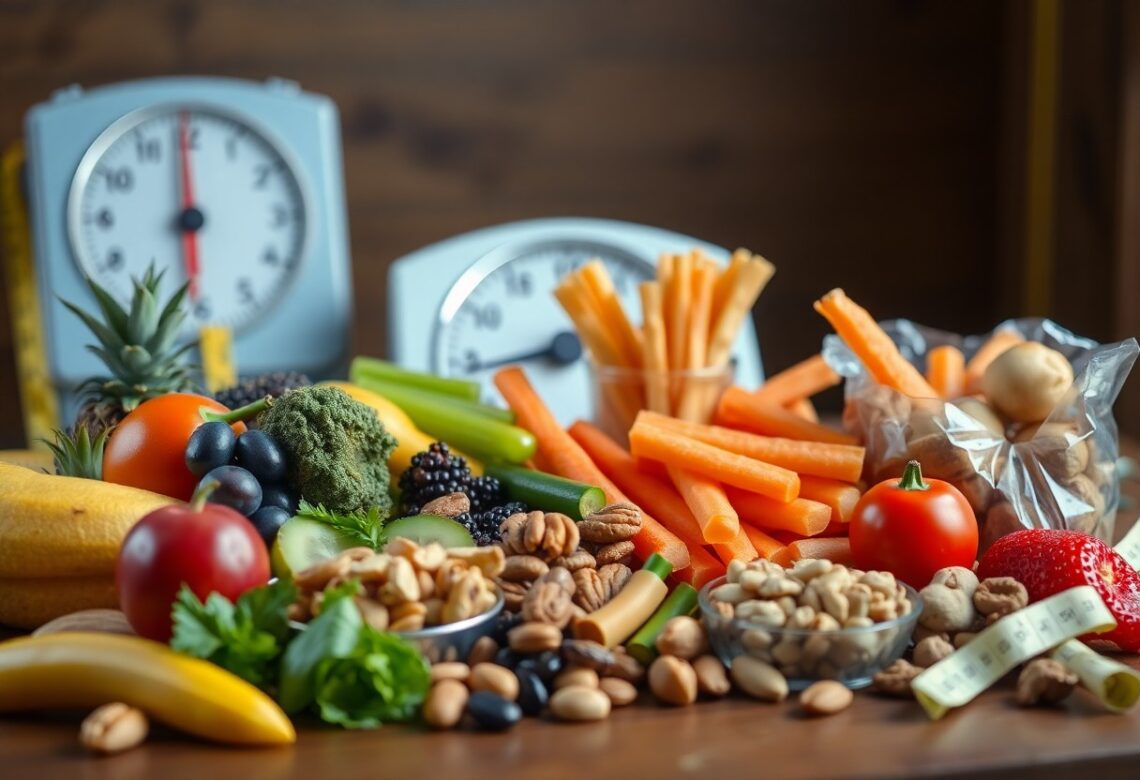Over the course of your weight loss journey, you may encounter persistent food cravings that can challenge your commitment and progress. Understanding the underlying triggers and developing effective strategies can empower you to navigate these cravings successfully. This guide will provide you with practical tips and insights to help you manage your cravings, allowing you to stay on track and achieve your health goals. Let’s explore how you can regain control and make mindful choices when temptation strikes.
Key Takeaways:
- Understanding triggers: Identifying emotional, environmental, or situational triggers can help manage cravings more effectively.
- Healthy alternatives: Opt for nutritious snacks like fruits or vegetables instead of unhealthy options to satisfy cravings without derailing your goals.
- Stay hydrated: Drinking water can help reduce feelings of hunger and alleviate cravings, as thirst is often mistaken for hunger.
- Mindful eating: Practicing mindfulness while eating can enhance your awareness of cravings, making it easier to make healthier choices.
- Balanced meals: Consuming well-balanced meals with sufficient protein, healthy fats, and fiber can keep you full longer and minimize cravings.
- Limit restrictions: Completely cutting out favorite foods may lead to binge eating; moderation is key to a sustainable weight loss journey.
- Seek support: Joining a weight loss group or enlisting the help of friends and family can provide encouragement and accountability when managing cravings.
Understanding Food Cravings
Before initiateing on your weight loss journey, it’s necessary to comprehend what food cravings are. These urges often stem from biological, emotional, or situational factors, significantly influencing your eating habits. By understanding these cravings, you can better control them and make healthier choices that align with your weight loss goals.
Types of Food Cravings
- Emotional cravings
- Habitual cravings
- Physical cravings
- Specific food cravings
- Social cravings
Any type of craving can impact your weight loss journey, so it’s vital to identify which trigger your urges most frequently.
| Type | Description |
| Emotional Cravings | Triggered by feelings, such as stress or boredom. |
| Habitual Cravings | Resulting from routine eating times or situations. |
| Physical Cravings | Due to actual hunger or dietary deficiencies. |
| Specific Food Cravings | Yearning for particular foods, often high in sugar or fat. |
| Social Cravings | Influenced by social settings and peer pressure. |
Psychological Triggers
About understanding psychological triggers can significantly help in managing your food cravings. These triggers might include stress, boredom, or emotional responses linked to particular situations. Recognizing when these thoughts or feelings arise can help you implement alternative strategies to cope with cravings.
To effectively manage cravings linked to psychological triggers, first, identify your specific emotional patterns. Once you understand when and why you crave certain foods, you can develop healthier coping mechanisms, such as engaging in physical activity, practicing mindfulness, or seeking social support. This proactive approach can empower you to resist urges, ultimately supporting your weight loss efforts.
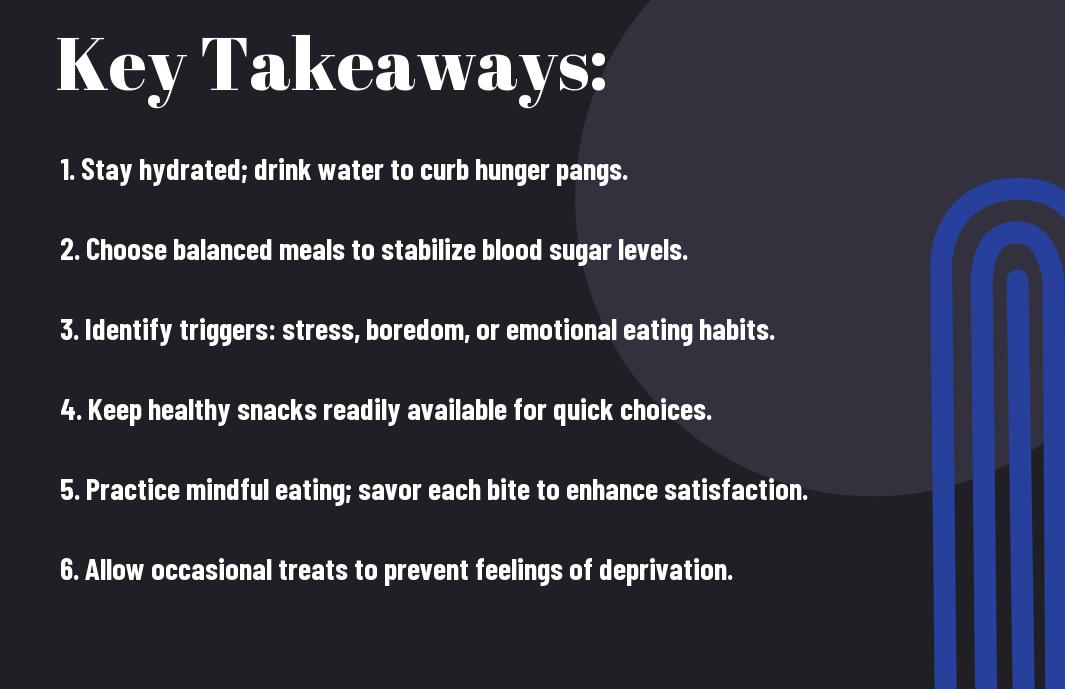
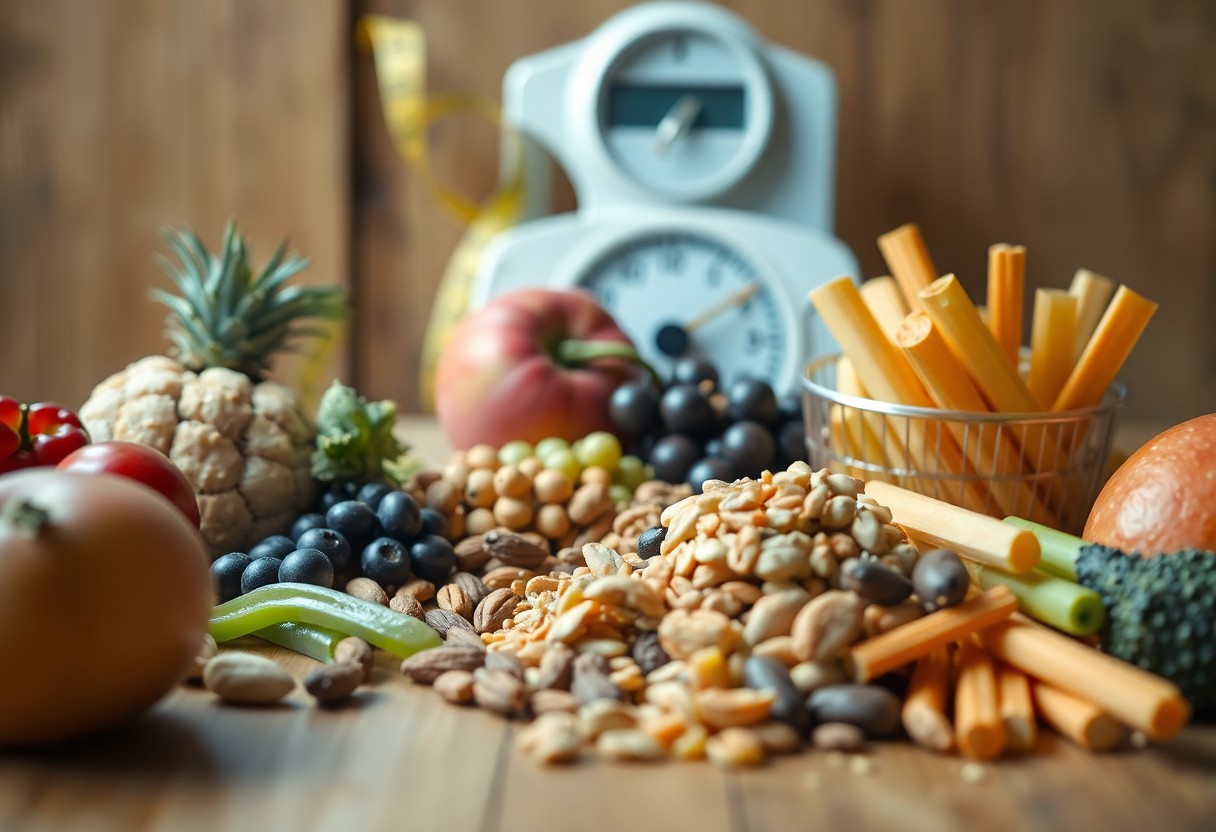
The Role of Nutrition in Managing Cravings
The quality of your nutrition plays a significant role in managing food cravings during weight loss. Understanding how your body responds to various nutrients can help you make better choices. Research shows that food cravings are often a conditioning response linked to body weight. You can read more about this in the study on Food Cravings and Body Weight: A Conditioning Response. By prioritizing nutrient-dense foods, you can maintain balance and minimize cravings.
Balanced Diet Essentials
With a focus on a balanced diet, you can supply your body with the necessary nutrients to curb cravings. Emphasize fruits, vegetables, whole grains, healthy fats, and lean proteins in your meals. This variety not only supports overall health but also helps stabilize your blood sugar levels, reducing sudden cravings that can derail your weight loss efforts.
The Impact of Sugar and Processed Foods
Between sugary snacks and highly processed foods, your cravings can easily become overwhelming. These items tend to spike your blood sugar and then lead to sharp drops, resulting in a cycle of hunger and cravings. By minimizing your intake of sugar and refined products, you can stabilize your energy levels and maintain better control over your appetite.
Plus, the addictive nature of sugar and processed foods can trigger intense cravings that overshadow your weight loss goals. When you opt for whole, unprocessed foods, you’re less likely to experience these dramatic blood sugar spikes, making it easier to resist the temptation of unhealthy snacks. By focusing on nutrient-rich options, you empower yourself to make healthier choices that keep cravings at bay.
Strategies for Reducing Food Cravings
Despite your best intentions, food cravings can derail your weight loss journey. To effectively manage these urges, consider strategies such as staying hydrated, incorporating balanced meals, and having a plan for when cravings strike. Additionally, if you find yourself struggling, you can Get Help from professionals who can provide guidance tailored to your needs.
Mindful Eating Techniques
Below, you’ll find that mindfulness can be a powerful tool in combating cravings. By focusing on your meals, savoring each bite, and listening to your body’s hunger signals, you can cultivate a more satisfying and nourishing eating experience, making it easier to resist impulsive choices.
Healthy Snack Alternatives
Behind every food craving lies the opportunity to make better choices. Instead of reaching for processed snacks, consider wholesome options that still satisfy your taste buds, such as fruits, nuts, and yogurt. These alternatives provide nutrition and can help curb your cravings effectively.
This approach allows you to enjoy snacks without feeling guilty. By preparing healthy snacks in advance, you can have them on hand when cravings hit, making it easier to stick to your weight loss goals. Opt for items like air-popped popcorn, veggie sticks with hummus, or a small amount of dark chocolate to allow for indulgence without overdoing it.
The Importance of Hydration
Now, staying well-hydrated is an vital part of managing food cravings during weight loss. Often, our bodies can confuse hunger with thirst, leading you to reach for snacks when all you really need is water. By prioritizing hydration, you can help mitigate false cravings and make smarter, healthier choices that align with your weight loss goals.
How Dehydration Affects Cravings
Among the many effects dehydration can have on your body, increased cravings for unhealthy foods tends to be overlooked. When you are dehydrated, your body may signal hunger even when you actually need fluids, which can lead to unnecessary snacking or overeating. By addressing your hydration needs first, you can better control these impulses.
Tips for Staying Hydrated
Around 70% of your body is made up of water, and maintaining that balance is vital. Here are some effective tips for staying hydrated:
- Carry a reusable water bottle with you at all times.
- Set reminders on your phone to drink water regularly.
- Infuse your water with fruits or herbs for added flavor.
- Try to drink a glass of water before each meal.
This will help you make hydration a part of your routine and support your weight loss efforts.
Additionally, incorporating hydrating foods into your diet can help you reach your daily water intake without feeling overwhelmed. Foods like cucumbers, watermelon, oranges, and strawberries are packed with water content and nutrients. Consider adding these options to your meals or as snacks:
- Make a refreshing salad with hydrating veggies.
- Blend fruits into smoothies for a nutritious option.
- Prepare soups or broths that are rich in water.
- Keep fruit slices handy for quick, healthy snacking.
This variety will keep your hydration levels up while also providing vital nutrients that support your overall health.
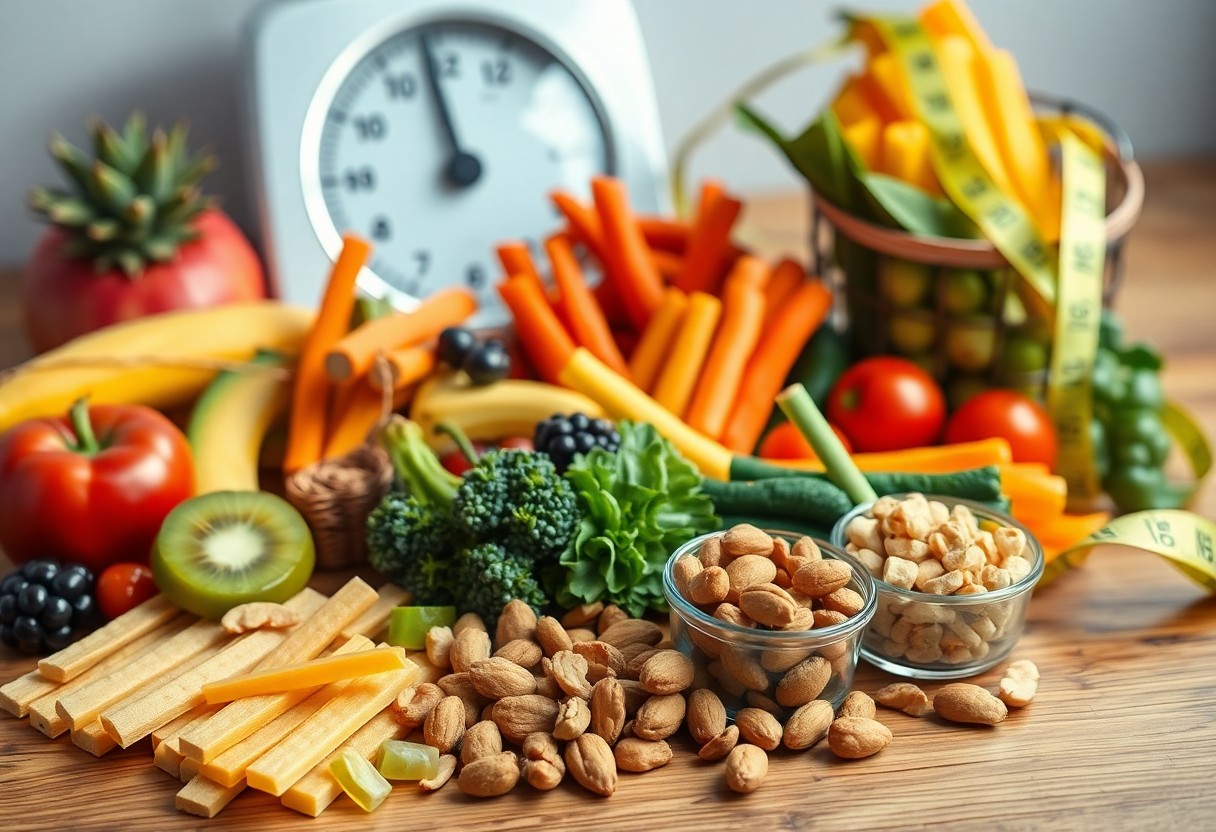
The Emotional Aspect of Food Cravings
Once again, understanding the emotional component of food cravings is necessary during your weight loss journey. Cravings often stem from feelings such as stress, boredom, or sadness rather than physical hunger. To navigate these moments effectively, explore 7 tips to deal with cravings during your weight-loss spree that can help you regain control without derailing your progress.
Identifying Emotional Triggers
Below the surface, your food cravings may indicate deeper emotional triggers tied to past habits or experiences. To better manage them, take time to recognize when these cravings arise and what specific feelings or situations contribute to them. Keeping a journal can help you identify patterns that precede your cravings, leading to better understanding and improved coping strategies.
Coping Mechanisms
Aspect of managing cravings successfully involves employing effective coping mechanisms. By finding alternative ways to deal with emotional triggers, you can reduce the likelihood of turning to food for comfort.
Also, consider healthy distractions like engaging in physical activity, reading, or reaching out to friends. Practicing mindfulness techniques, such as meditation or deep breathing exercises, can help you regain focus when cravings hit. Additionally, consider planning nutritious meals and snacks, so you have healthier options readily available, making it easier to choose wisely when cravings arise.
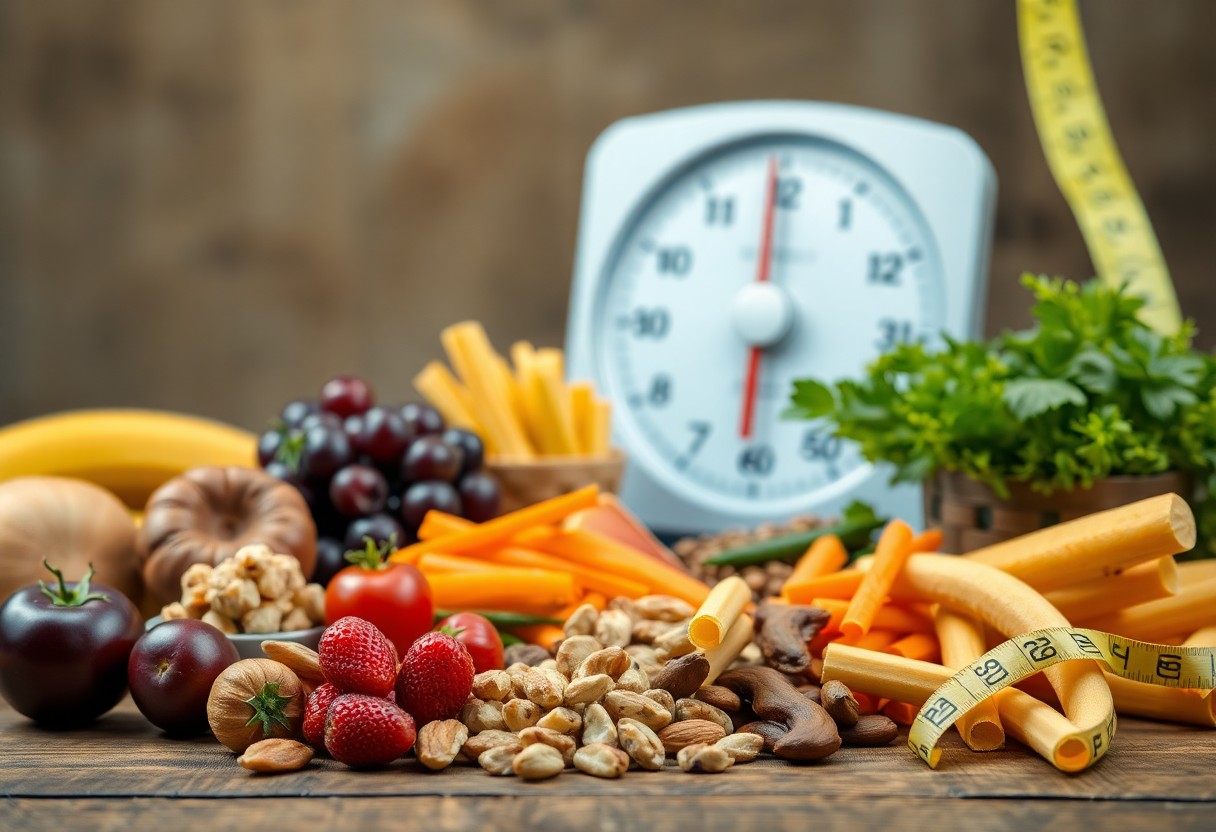
The Role of Exercise
For those looking to manage food cravings during weight loss, incorporating exercise into your routine can be highly beneficial. Engaging in physical activity not only burns calories and aids in weight loss but also helps regulate your appetite and improve overall mood. When you exercise regularly, you’re more likely to feel empowered and in control of your food choices, which can significantly reduce the frequency and intensity of cravings.
How Physical Activity Reduces Cravings
One effective way physical activity helps manage cravings is by stimulating the release of endorphins, which enhance your mood and decrease feelings of stress or anxiety that often trigger unhealthy eating. Additionally, exercise may alter hormone levels, such as ghrelin and leptin, leading to better appetite regulation and reduced hunger signals.
Types of Exercise to Consider
On your journey to manage cravings, consider incorporating a variety of exercise types into your routine. Here’s a quick guide to different forms of exercise that may help:
| Type of Exercise | Description |
|---|---|
| Cardio | Includes activities like running and cycling to increase heart rate. |
| Strength Training | Involves using weights or resistance to build muscle mass. |
| Yoga | Focuses on flexibility, breathing, and mindfulness for stress relief. |
| High-Intensity Interval Training (HIIT) | Combines short bursts of intense exercise followed by rest. |
| Walking | Simple yet effective, it’s an easy way to stay active daily. |
Assume that you choose a mix of these exercises to keep your routine engaging and effective. Diversifying your workouts not only helps combat cravings but also improves your overall fitness and mental well-being.
Reduces the tendency to indulge in unhealthy snacks, exercise also provides a structured opportunity for you to focus on your body and well-being. Engaging in physical activity burns calories and fosters a healthier relationship with food. Consistent exercise encourages better sleep patterns, enhances mood, and increases your overall energy levels, which all contribute to maintaining control over cravings.
| Benefits of Exercise | Description |
|---|---|
| Enhanced Mood | Boosts feelings of happiness through endorphin release. |
| Improved Sleep | Physical activity promotes deeper sleep for better recovery. |
| Increased Energy | Regular exercise helps you feel more energized throughout the day. |
| Weight Management | Aids in maintaining a calorie deficit and building lean muscle. |
| Mindfulness | Promotes awareness of your body and food choices. |
Assume that you incorporate these elements into your routine for a more balanced approach to managing cravings effectively and supporting your weight loss journey.
To wrap up
With these considerations, managing food cravings during weight loss becomes more achievable. By understanding your triggers, incorporating mindful eating practices, and prioritizing nutrient-dense foods, you can effectively control those urges. It’s important to stay hydrated and maintain a balanced diet that satisfies your taste buds while supporting your goals. Embrace a flexible mindset, allowing yourself occasional treats to prevent feelings of deprivation. Ultimately, building a healthier relationship with food will not only assist you in your weight loss journey but also contribute to long-term success and well-being.
FAQ
Q: What are food cravings, and why do they occur during weight loss?
A: Food cravings are intense desires to eat specific foods, often unhealthy options. They can occur during weight loss due to several factors, including hormonal changes, psychological stress, and the restriction of favorite foods. As the body adapts to a lower calorie intake, cravings can increase, making it important to manage them effectively.
Q: How can I differentiate between cravings and hunger?
A: Cravings often manifest as a strong desire for a particular type of food, regardless of your physical hunger level. They might arise suddenly and can be linked to emotions or certain triggers. In contrast, hunger is a physiological signal that manifests gradually, calling for general food intake rather than a specific item. Practicing mindful eating can help recognize the difference.
Q: What strategies can I use to manage food cravings?
A: Effective strategies for managing cravings include:
1. Keeping hydrated: Sometimes, thirst can be mistaken for cravings.
2. Eating regular meals: Balanced meals with adequate protein, fiber, and healthy fats can keep you satisfied.
3. Incorporating healthier alternatives: Find healthier versions of your craving foods to enjoy in moderation.
4. Engaging in distraction techniques: Activities such as walking, reading, or meditating can help shift your focus away from cravings.
Q: Are there specific foods that can help curb cravings?
A: Yes, certain foods can help reduce cravings. High-protein foods like eggs, nuts, and Greek yogurt can promote satiety and reduce hunger. Foods rich in fiber, such as fruits, vegetables, and whole grains, can also help you feel fuller for longer. Additionally, incorporating healthy fats from sources like avocado and olive oil can play a role in regulating appetite.
Q: How can emotional eating be linked to cravings, and how can I address it?
A: Emotional eating occurs when individuals use food to cope with feelings such as stress, anxiety, or boredom. This behavior can lead to increased cravings for comfort foods. To address emotional eating, it can be beneficial to identify triggers, reflect on feelings before eating, and seek alternative coping mechanisms such as journaling, practice mindfulness, or talking to a friend or professional.
Q: What role do hormones play in managing food cravings during weight loss?
A: Hormones like ghrelin and leptin are involved in hunger and satiety regulation. Ghrelin stimulates appetite and can increase during weight loss, while leptin signals fullness and can decrease. Fluctuations in these hormones due to dietary changes canincrease cravings. Focusing on a balanced diet, regular meal timing, and enough sleep can help regulate these hormones effectively.
Q: When should I seek professional help for my cravings during weight loss?
A: If cravings become overwhelming and lead to binge eating or significantly impact your mental and emotional well-being, it may be time to consult a professional. A healthcare provider or nutritionist can provide tailored strategies and support to address ongoing issues with cravings and help create a healthier relationship with food.
